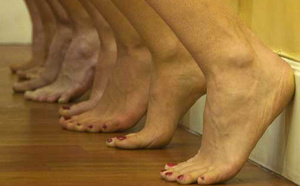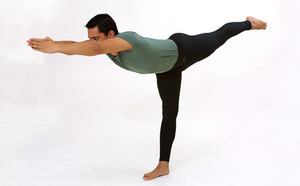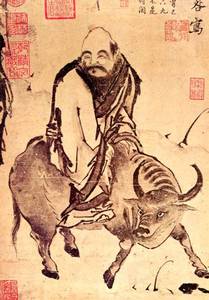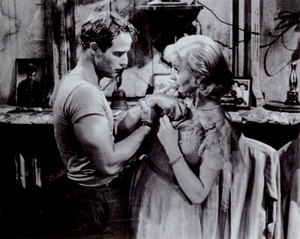How your Flexibility affects your Arteries
"Happy New Year Heart Attack"
Heart attacks are more common during the winter months than in any other season. A study of death certificates published in Circulation in 2004, confirmed the association of heart-attack deaths during the winter. The results were referred to as “The ‘Merry Christmas Coronary’ and ‘Happy New Year Heart Attack’ Phenomenon.”
Paschimotanasana Test of Your Arteries
Why heart-attack deaths surge during the winter holidays is not clear, but cardiologists have some informed guesses. A new study published in the journal Heart and Circulatory Physiology suggests, that there may be a way to test at least one element of your heart’s health right in your own home, right now. Sit on the floor with your legs out in front. Bend from the hips. Can you touch your toes? If you can, then your cardiac arteries are probably flexible.
The study recruited 526 healthy adults between the ages of 20 and 83 and had them perform the forward bend test described above, and measured their extensions precisely. Researchers sorted the subjects into either the high-flexibility group or the poor-flexibility group.
Next, researchers estimated how flexible their arteries were. Supple arteries let the blood move freely. Stiff arteries make your heart work harder and over time could lead to a greater risk for heart attack and stroke, according to researchers at North Texas University.
Correlation if over 40
The researchers found a correlation between inflexible bodies and inflexible arteries in subjects older than 40. Adults with poor forward bends tended to have arterial stiffness. The study concluded that “a less flexible body indicates arterial stiffening, especially in middle-aged and older adults.” This correlation was not found in those under 40.
Arterial stiffening does not necessarily lead to arterial disease, Mr. Yamamoto says. Some arterial stiffening is inevitable with age; but the stiffer your arteries, the less efficient your heart is. Mr. Yamamoto says, that alterations in the composition of muscle tissues in the lower back could be occurring in the arterial walls at the same time.
Good News
The good news is that increasing your flexibility might somehow loosen up your arteries. That was the unreplicated finding of a small study at the University of Texas at Austin in 2008. The study examined whether weight lifting increased arterial stiffness. (It didn’t). The control group stretched. They were not expected to change cardiac function, but over the course of 3 months they increased the flexibility of their arteries by about 20 percent.
Mr. Yamamoto and his researchers are conducting a large study to determine how stretching affects the arteries. Until the results are in, Mr. Yamamoto says, it’s best to consider your flexibility as a probable indication of your arterial elasticity. “If you can touch your toes in the sit-and-reach test, your flexibility is good,” he says. Tight arteries are not necessarily diseased arteries; they’re just not fit.
Yoga
For those of you who practice Yoga regularly it seems I have just found another reason for you to keep it up. If you are new to Yoga now is a good time to start.
A new theory of depression
Evolutionary psychology
Dr. Andy Thomson became interested in evolutionary psychology in the late 1990s. This line of investigation speculates about the features of the human mind in terms of natural selection. Evolutionary psychology assumes that the brain has a long evolutionary history, which shapes human nature. according to this orientation, we are not a blank slate but a byproduct of imperfect adaptations. Oiur mind was designed to meet the needs of hunter-gatherers. These theories are hard to prove but their assumptions are largely by scientists today. There is no longer any sognificant debate about whether evolution played a role in the development of the human brain. Instead, the current focus is on which of our mental traits are adaptations and which are accidents.
Depression is a paradox for evolutionary psychology — why is a condition that is so costly is also so common. This ia very complex and sensitive subject and I don't want to misrepresent it in any way. However, I believe that the recent controversy is worth discussing in view of the enormous attention given to its alleviation by modern pharmacology and psychiatry and positive psychology.
Yoga for Bad Ankles
Ankle Sprains lead to Bad Balance
Back in the mid-1960s, a physician, wondering why his patients so often suffered one ankle sprain after another, asked his patients to stand on their injured leg (after it recovered). Usually, they wobbled badly, having to put their foot down much sooner than people who’d never sprained an ankle. With this simple experiment, the doctor made an important discovery - people with bad ankles have bad balance. What if you treat the balance problem, will it improve the ankle function? No one thought of this until now!
A New Treatment for Bad Ankles
That conclusion is only now making its way into the treatment of chronically unstable ankles. Patrick McKeon, an assistant professor in the Division of Athletic Training at the University of Kentucky, doesn’t really know why it has taken so long.
Most Common Sports Injury
They’re the most commonly injured body part in sports. Eight million people sprain an ankle each year in Europe. Millions of those same people will then go on to sprain that same ankle, or their other ankle, in the future. McKeon says, “The recurrence rate for ankle sprains is at least 30 percent, and … it may be high as 80 percent.”
Successive Sprains
Many of those second successive sprains could be avoided with an easy exercise. Stand on one leg. Balance for a minute and repeat. Sounds familiar? The Yoga tree pose.
Balance Exercises
This balance exercise, is a well-documented approach to dealing with unstable ankles. A number of studies have shown that the treatment can be quite beneficial. Six weeks of balance exercises, begun soon after a first ankle sprain, reduced the risk of another sprain. The training also lessens, the chances of suffering a first sprain at.
Ankle Sprains Damage your Proprioceptors
Doctors thought that ankle sprains were primarily a matter of overstretched, traumatized ligaments. Tape the joint, relieve pressure on the sore tissue, and the ankle should heal, they thought. But that ignored the role of the central nervous system. “There are neural receptors in ligaments,” says Jay Hertel, an expert on the ankle, at the University of Virginia and. When you damage the ligament, “you damage the neuro-receptors as well. Your brain no longer receives reliable signals”. Your proprioception is impaired and you are more prone to falling over and re-injuring yourself.
Balance Exercises Repair the Proprioceptors
Some people wobble for about a month after an initial ankle sprain, and then it disappears; for others it may continue and become permanent. Researchers don’t yet know why. But they believe that balance exercises can return the joint and its proprioception to normal.
The Tree Pose
All you need to do is to practice the Tree pose two or three minutes a day, and when you find that too easy do it with your eyes closed and when that is not challenging then you can hop. If you want to advance even further then do the balance pose while standing on a pillow or more difficult variations that we teach at the Yoga Center Madrid.
A new reason to abstain
Alcohol and Conception
Apparently recent research indicates that for couples who wish to conceive, abstaining from alcolhol maybe very positive.
IVF
Studies of In vitro fertilization show that if a couple drinks over the course of one week the equivalent of half a bottle of wine their chances of a birth will be reduced by a quarter.
One beer a day?
Men who drank a beer daily contributed to a 30% lower chance of a live birth and a 38% greater chance of failed implantation.
Gita Doubts
The Gita and "The Reader"
I have recently read the book and seen the movie, "The Reader". I find myself admitting that all these years that I have taught the Gita I am still uncomfortable about how it treats war and violence. I have always rationalized that the text is not a defence of war but a literary vehicle that uses war to dramatize the doctrines of non-attachment on the battlefield of life.
Dharma versus Ahimsa
However, there seems to be an implicit condolence of war and violence as appropriate responses to injustice and tyranny. The Gita places caste obligation/dharma above all other virtues while surrendering the moral conflict to Krishna. "The Reader" reminds me of the dilemma that Nuremberg Judges and juries faced and what we postmodern Europeans can not ignore. Where does the Gita fit into this debate regarding duty and conscience?
Desire
"He who knows contentment is rich; there is no disaster greater than not being content." -Lao Tse
Desire
Throughout the world and across centuries sages have advised that the way to overcome desire is not by fulfilling it, but by mastering our desires. Perfect mastery of our desires is probably not possible, but a relative mastery seems acceptable. By learning to sort our desires and choosing to fulfill some, while attempting to reduce others, is a more practical approach than the extremes that promise 'perfect' happiness.
Content, adj,. Having one's desires bounded by what one has (though that may be less than one could have wished); not disturbed by the desire of anything more, or of anything different.
- Oxford Enfglish Dictionary
Little is needed to make a wise man happy, but nothing can content a fool. That is why nearly all men are miserable.
- La Rochefoucauld
My Orientation
My orientation
I have been interested in inner life development since I encountered Christian mysticism in my adolescence. My curiousity led me to study Buddhism and Hinduism and practice oriental meditation. Now as I practice psychotherapy I find myself straddling two different orientations - Eastern mysticism and Western psychology.
A common aim
Both traditions have a common aim - to alleviate personal suffering. The Buddha stated from the begining of his teachings that all is suffering (sarvam dukkha) and that his noble eightfold path is a cure. Psychology literally means the study of the soul and psychotherapy is the use of any procedures that have palliative effects upon any mental, emotional or behavioural disorder. In other words the use of any techinique to reduce human suffering. Both have the same intention. I apply them both.
Combination Psychology
Recently, Western psychology discovered the wisdom of the Eastern traditions. Psychologists such as Jan Kabat-Zinn, Z.V. Segal, J. D. Teasdale and many others have found successful applications for approaches such as mindfulness in combination with Western techniques. I find this trend encouraging.
Integral Psychology
Ken Wilber is an American philosopher who has attempted to integrate the Eastern and Western wisdom literature in an attempt to create an 'Integral Psychology'. He has begun a discussion about the possible integration of premodern, modern and postmodern sources in a systematic embrace rather than the current eclecticism
The scope of Depression
A Mood Disorder
Depression is a mood disorder. It generally means that on is 'feeling down' or 'blue'; but this misses the fact that it consists of a combination of elements, not just one feature. Clinical depression is pronounced when several elements such as difficulties sleeping, poor appetite, reduced concentration, and fveelings of hopelessness and worthlessness persist for at least 2 weeks.
A Most Common Disorder
Depression is the most common psychiatric condition globally. Approxiamtely 17% of the population of Europe has had some experience with depression in the last 6 months. There is no single face to depression. For some it is low mood or lack of concentration while for others it is reduced ability to interact with loved ones, or lack of energy and preoccupation negative themes and ideas. Depression rarely comes alone. It is usually accompanied by anxiety which may manifest in panic attacks, phobias or obsessive-compulsive behaviour. Between 20-25% of women and 7-125 of men will suffer clinical depression during their lifetime.
But Few Seek Help
The surprising thing about depression is how very few individuals seek mental health services. Only 12% of those depressed see someone. For this reason depression has an important public health issue. The degree oif disability is comparable to major illnesses. depressed patients spend more time in bed than patients with lung disease or arthritis.
Antidepressants
Currently antidepressants are prescribed for the acute period, then for continuation of treatment for 6 months more, and as maintenance treatment from 3 to 5 years more. However, antidepressant medications have their effect by suppressing the symptoms; they do not address the supposed causes of the depression. In addition antidressant medication is not suitable for pregnant women, those undergoing surgery and those experienceing side effects. Thus, between 30 - 40% stop taking their medication.
Lie to me
William James (1842 – 1910), the father of American psychology, had his own particular theory of how human emotions operated. He believed that the body is central to the generation and experience of emotions (similar in some ways to the Darwinian view). James believed that we first must experience the bodily changes that have been initiated directly by the perception of the provoking stimulus. He wrote that “we feel sorry because we cry, angry because we strike, afraid because we tremble, and not that we cry, strike, or tremble, because we are sorry, angry, or fearful, as the case may be.” (James, 1884, p.190). He held that “bodily changes follow directly the PERCEPTION of the exciting fact, and… our feeling of the same changes as they occur IS the emotion” (Ibid, 189-190). In other words James’ theory was that, in order to have an emotion, one must first have bodily changes of some sort.
James delivered a lecture called “The Gospel of Relaxation” in Boston in which he stated that if you are dejected and want to be happy, don’t mope around, act as if you are happy, and you will become happy. “ The …voluntary path to cheerfulness, if our …cheerfulness be lost, is to sit up cheerfully, to look cheerfully, and to act and speak as if cheerfulness were already there.” (James, 1899, p. 122). James was aware of the cognitive component of our emotional state; however, he believed that the feedback we receive from our bodies is such a major influence of our experience of an emotion that it could override the cognitive aspect of the emotion.
James, W. (1884) What is an emotion? Mind, 19, 188- 205
James, W. (1884) Talks to teachers on psychology: and to students on some of life’s ideals New York: Henry Holt
Example Post - English
Header 2
Short paragraph.
Examples for an internal link and for an external link. Please note that I've used the toolbar above to create these links.

Header 3 for long paragraph
Lorem ipsum dolor sit amet, consectetur adipisicing elit, sed do eiusmod tempor incididunt ut labore et dolore magna aliqua. Ut enim ad minim veniam, quis nostrud exercitation ullamco laboris nisi ut aliquip ex ea commodo consequat. Duis aute irure dolor in reprehenderit in voluptate velit esse cillum dolore eu fugiat nulla pariatur. Excepteur sint occaecat cupidatat non proident, sunt in culpa qui officia deserunt mollit anim id est laborum.
Header 4 for blockquote
Lorem ipsum dolor sit amet, consectetur adipisicing elit, sed do eiusmod tempor incididunt ut labore et dolore magna aliqua. Richard Dawkins
List Examples
Unordered, Bullet List
- Fresh figues
- Cookies
- Chocolate bars
Ordered, Numbered List

Things to do.
- Create many posts
- Use all features of the blog
- Remove or mark as drafts the posts which we don't want to publish right away
- Prepare the blog for the public
- Send email newsletter to announce it to students
Om Shantih



